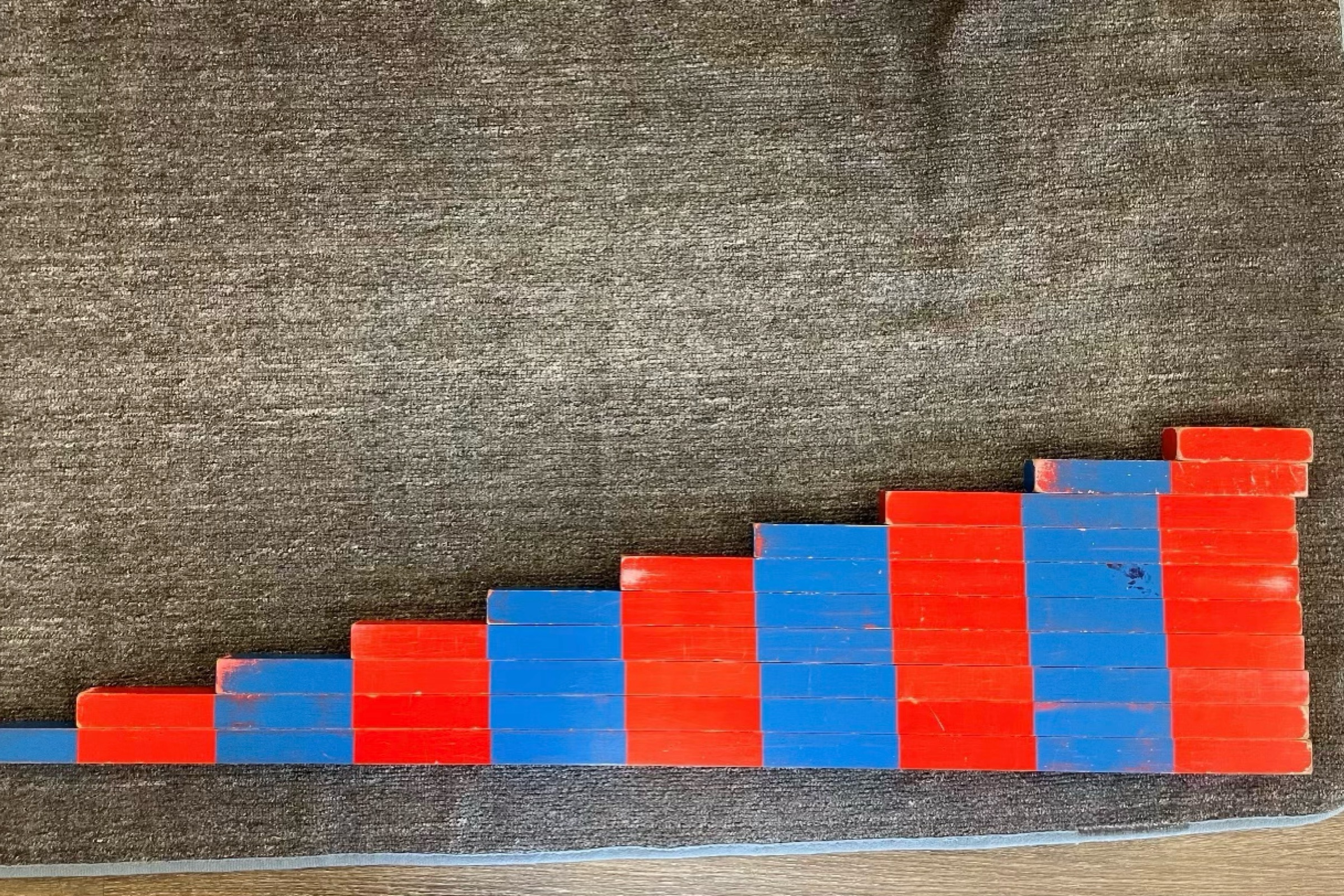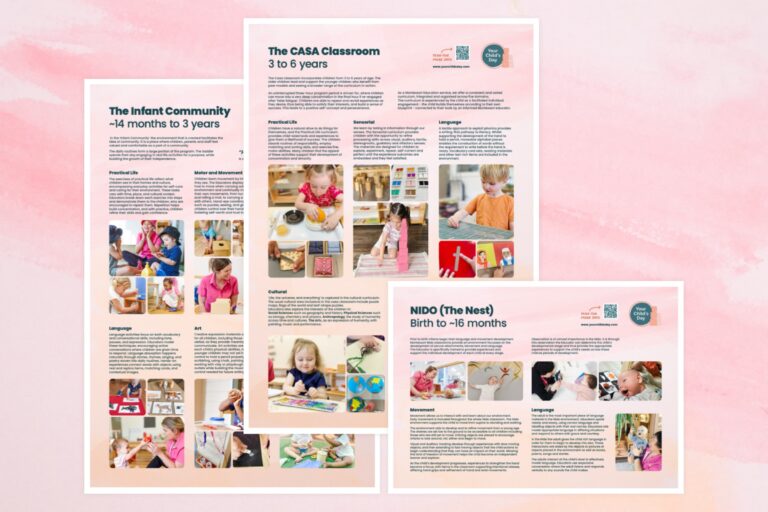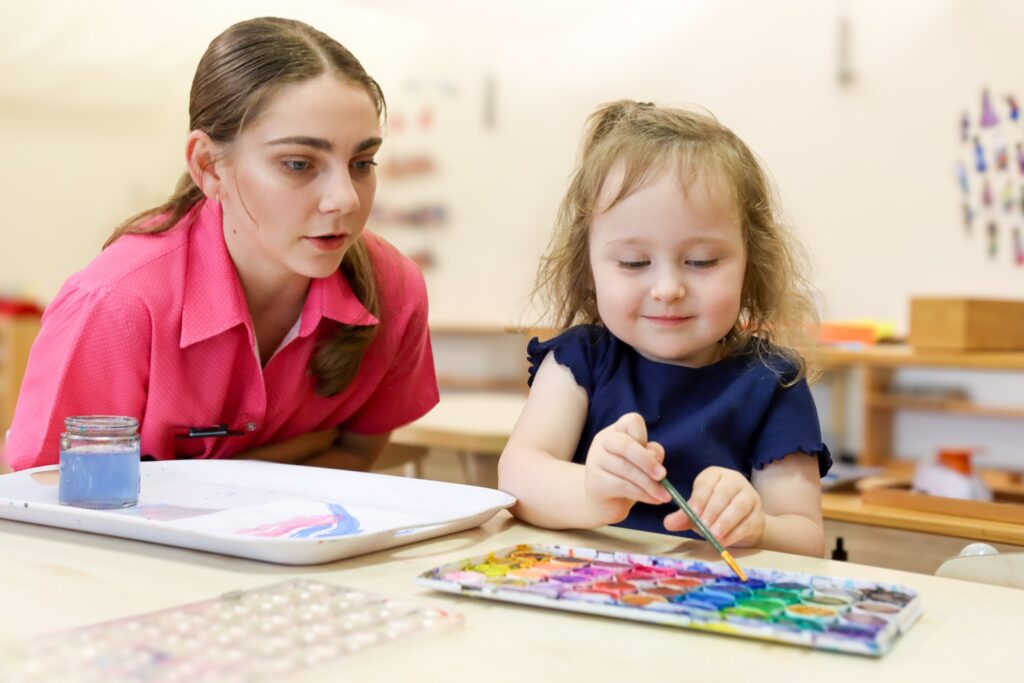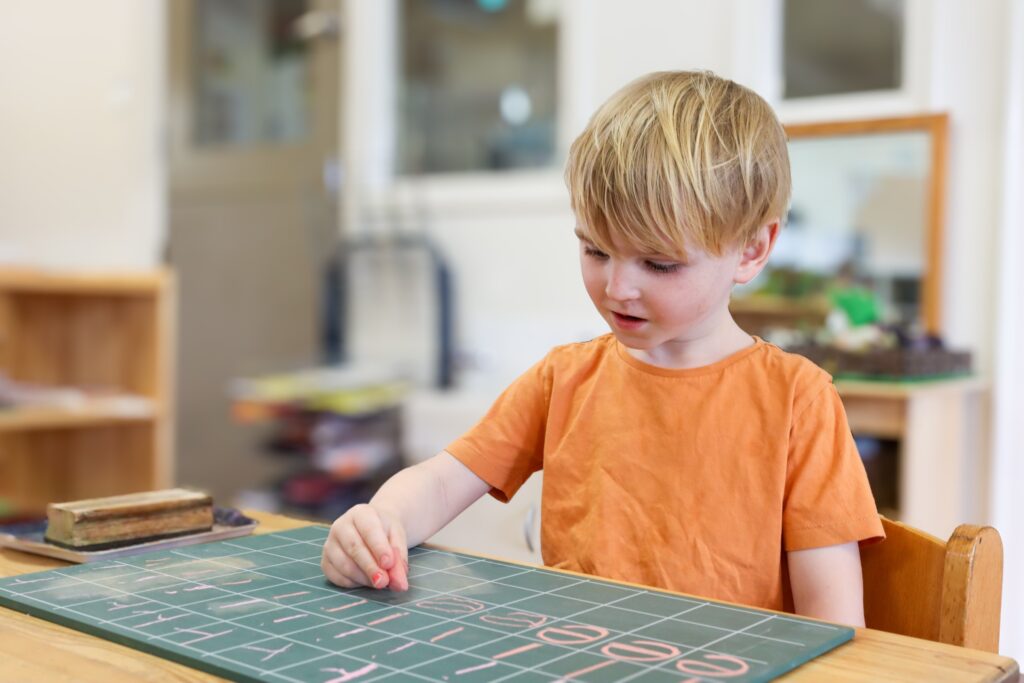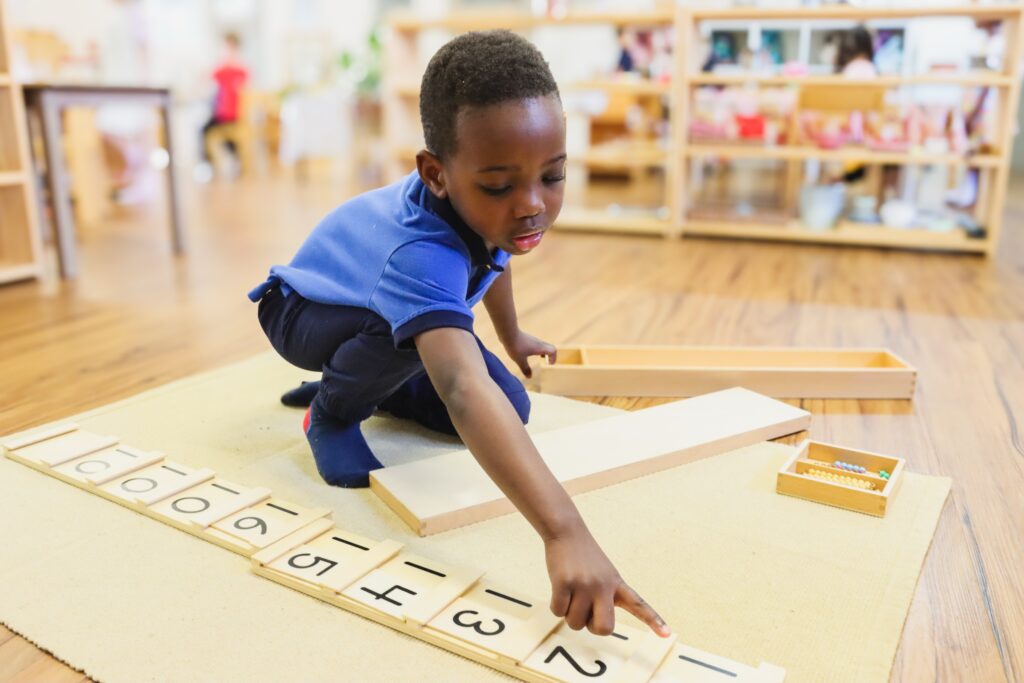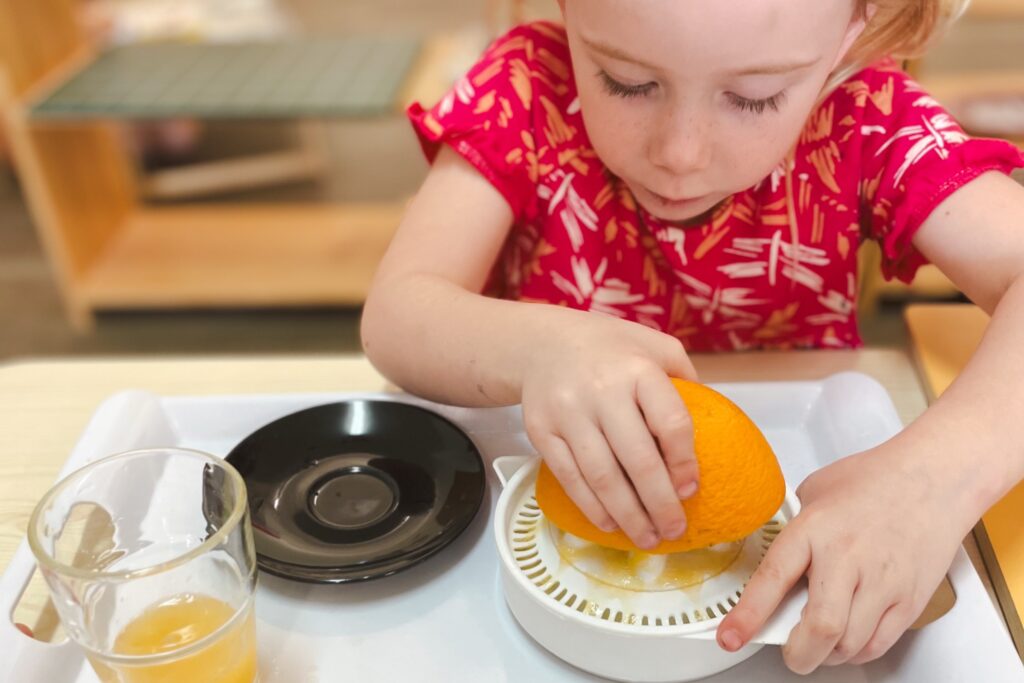Sensorial
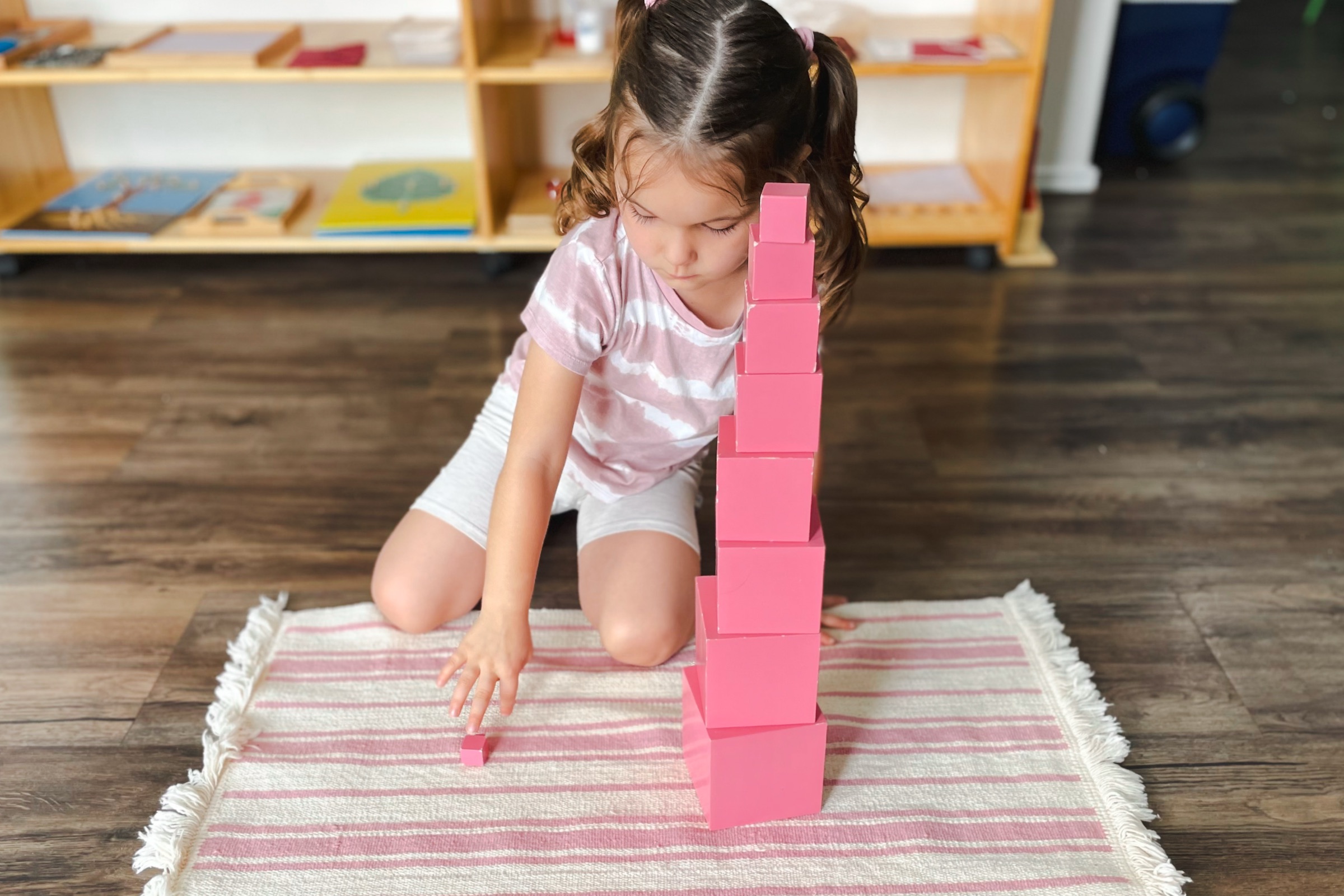
We learn through taking in information through our senses. The Sensorial curriculum provides children with the opportunity to refine processing skills across visual, auditory, tactile, stereognostic, gustatory and olfactory senses. The materials are designed for children to explore, experiment, repeat, self-correct and perfect until the experience outcomes are embedded and they feel satisfied. Each material isolates one characteristic. These experiences provide a platform for further experiences in language, mathematics, sciences and the arts as each apparatus has indirect aims.
The concept of “self-correction” provides the opportunity for children to persevere, problem-solve and perfect their activity without requiring the adult to inform them of their error or intervene for completion, leaving the child assuming their inadequacy. The cylinder blocks are a good example: if the child places a smaller cylinder into the hole, a ‘left over’ cylinder will remain at the end of the activity, prompting the child to examine and correct. A cylinder that is too large will not fit.
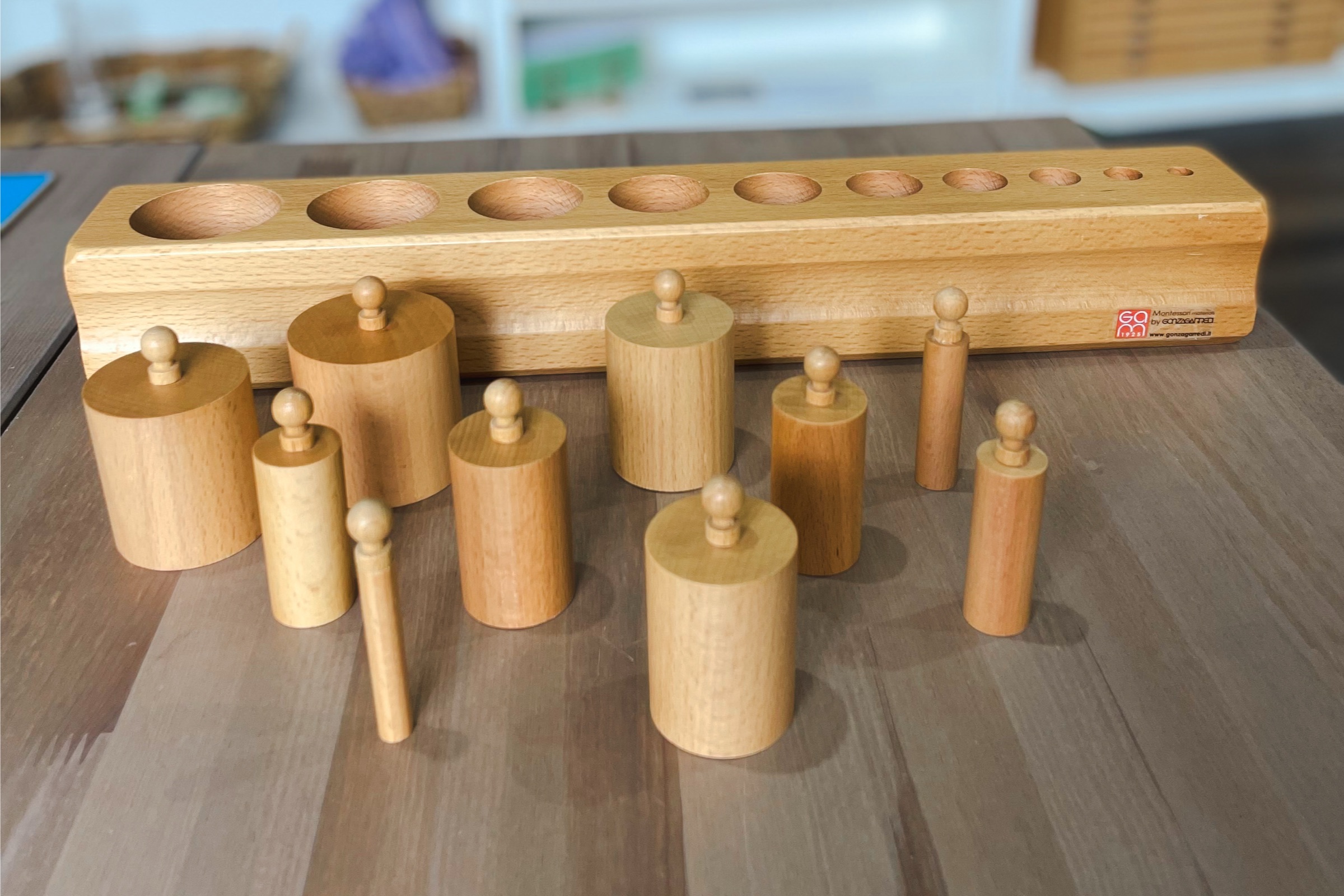
Indirect Aims are strategic design aspects of materials that allow a level of familiarity to flow through the curriculum. An example of this is the provision of the ‘red rods’ as a sensorial activity focussed on visual discrimination. The direct aim of the ‘red rods’ is to process the visual information and determine which rod is next in length to make a uniformly graded pattern.
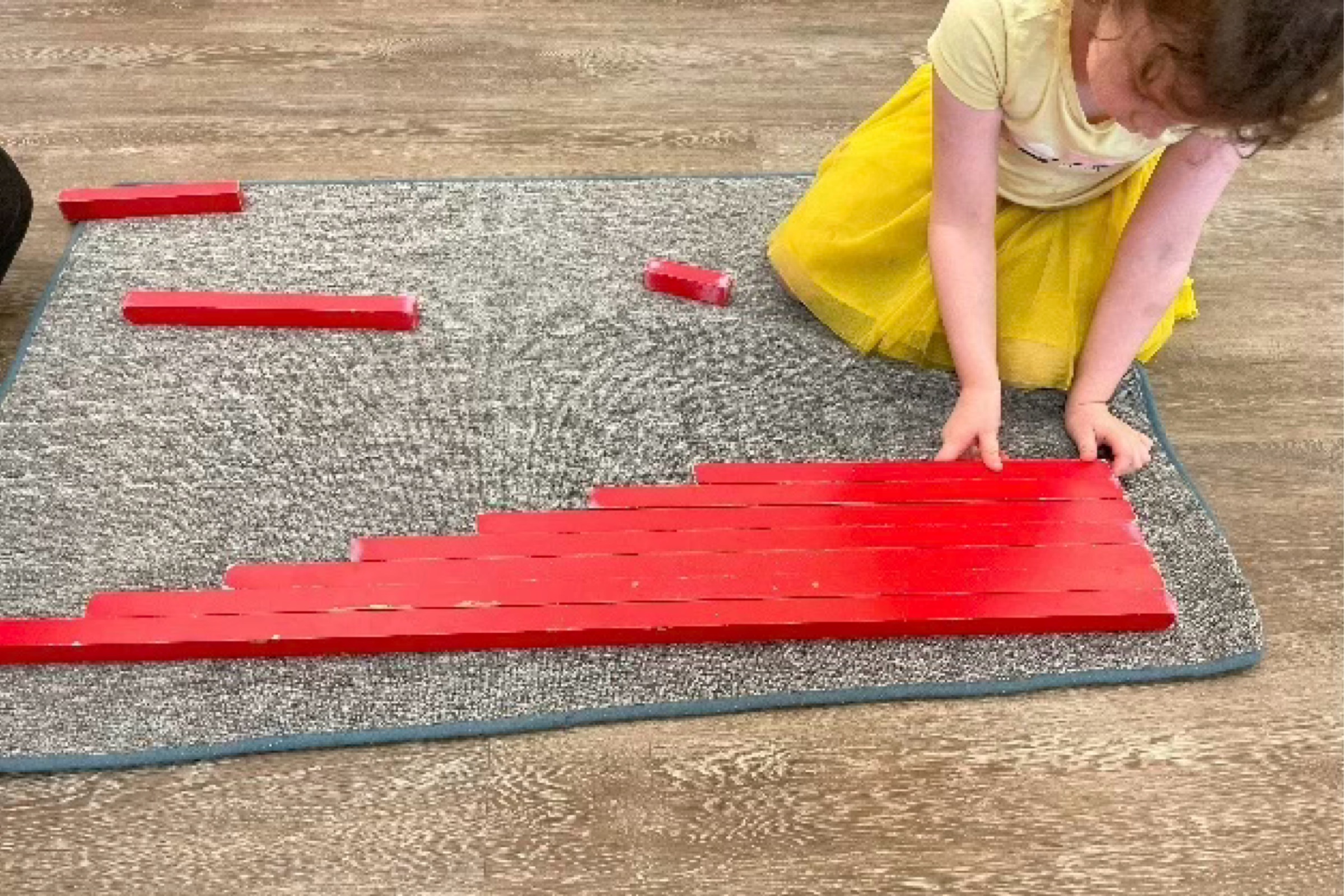
As the children carry the red rods, as far as they are able, they carry them with their hands on each end. This builds a very concrete experience of the varying sizes and a muscle memory associated with length. This is one of the indirect aims. Another indirect aim is the direct comparison with the first of the mathematics materials. The number rods are entirely identical with the exception of the banded blue pattern. A level of existing familiarity makes any new learning content easier to tackle and absorb. The extensions of the red rods in which the different lengths are compared and coupled to make other lengths are a seamless preparation for the number rods.
